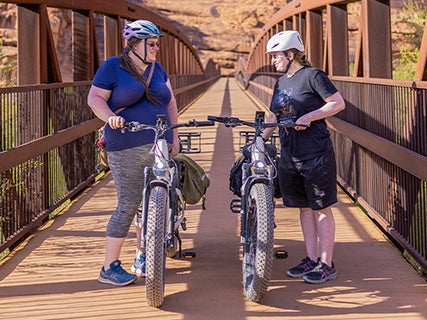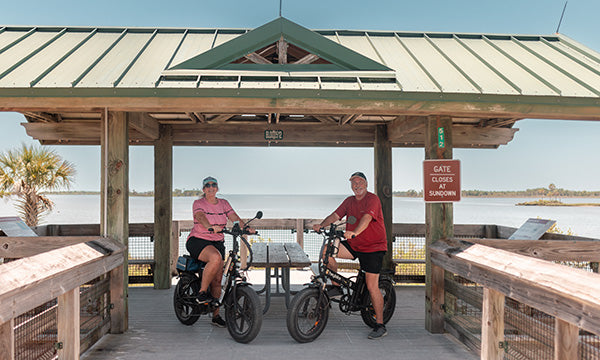What Is A Crank Arm On Bike?
The easiest way to understand crank arms is to think of them as the levers that your pedals attach to. Each bicycle counts with two crank arms mounted at either side of the bike and 180 degrees of each other. Hence resulting in the traditional double lever system that we associate so closely with bikes.
Each set of cranks is connected by an axle that can be either part of the bottom bracket or the cranks themselves, which ensures the two cranks move in tandem during your rides. Since at the end of the day the brackets ensure that pedaling is possible and comfortable for the rider, their main purpose is to take your pedaling power and transfer it to both the bottom bracket and forward gearing to ensure that your movement results in forward motion.
Cranks can be made from a wide variety of materials, ranging from steel, carbon fiber, and even aluminum. Generally, you'll find that a bike's crank will be made of the same material as the rest of the bike, with steel being the most common in older models and carbon fiber being mostly found in higher-end models.
What's the Best Crank Length for Cycling?
As we saw above cranks are not a fixed piece of any bicycle, and this means that you should feel free to replace them or modify them if you see the need. While any accessory is bound to get damaged with time, most of the time people change their cranks for comfort. And this is because a bike crank arm length plays a large role in how comfortable pedaling is for the rider.
The length of a lever directly affects the way power is transmitted to the rest of the crankset, but it also determines how far the pedals will be from your legs, which can be a concern depending on your height. So in broad terms what's the best possible crank length for cycling?
In general, it depends. While it would be easy to assume that shorter people would want shorter cranks this would also mean that they would need to pedal more for the same results. The standard lengths for cranks are 170mm, 172.5mm, and 175mm, and the specific choice out of the 3 mostly comes down to the size of the bicycle frame. These sizes provide an ideal balance between comfort and function, by considering the joint impact as well as the efficiency of pedaling.
Nonetheless, cranks can come as short as 150mm and as long as 180mm. So if you aren't comfortable with your current crank length and want to change try to aim for a length equivalent to 20 percent of your leg length or 41 percent of your tibia length.
How to Replace the Bike Crank Arm?
A bike crank arm replacement is not a complicated task, but it does require that you have the right tools at home, so make sure you have the following at hand:
- Crank Puller
- Flat Head Screwdriver
- Ratcheting Socket Wrench
- Smart Wrench
First and foremost we'll need to remove the old cranks, so take your screwdriver and pop off the cap from the crank arm. Now that the main bolt is exposed you'll need to take your socket wrench and carefully remove it from your bike.
With the bolt removed you should have access to the threads of the arm, so take the crank puller and manually affix it. Keep tightening it and the arm should come out, at which point you can pull it off with your wrench.
At this point you have completely removed the old arm, but before you install the new one make sure to clean all the involved parts with a rag. After that, you can slide the new arm on the tapered square of the bottom bracket axle.
Take your trusty socket wrench and tighten the bolt once again once you are done just pop in a new cap and you are done. As we said it's not a lot of steps, but you must have all the tools at hand so you don't have to force or scratch any pieces.
In Summary
A bike's crank arm is the levers connecting our pedals to the gears in the bike. Without cranks, there would be no movement and this makes them an essential part of any bike.
Crank arms are at the end of the day a pretty simple piece, but it means that there's little risk of them malfunctioning and that they are very easy to replace as well. Ultimately there is no set "perfect" length when it comes to cranks, but if you feel up for some experimenting you can easily change your cranks with common tools, just keep in mind your leg length and you should find a size that fits your needs.



Share:
Understanding Pedal Assist Electric Bike
Why Does Suspension Seatposts Matter